Edgar Boehm's marble statue of Darwin in the Natural History Museum was commissioned by the committee of the Darwin Memorial Fund. This body had been set up by Darwin's friends after his death in 1882, with the aim of providing, under the aegis of the Royal Society, 'a visible record of his personal aspect and a memorial of the esteem of his contemporaries'. The public's response was overwhelming, with subscriptions pouring in, the Observer noted, not only from Britain but from all the other European nations and the United States, 'even from poor and ignorant countries such as Central-American Republics'. The Botanical Gazette was pleased that the donors also encompassed all social classes, 'for in a memorial to this great epoch-maker in science should appear contributions from all those who appreciate his work or honor his memory, and their name is legion'. Scrutiny of the list of over 650 subscribers in the committee's report shows that their donations did indeed range from the Darwin family's £200 down to five shillings or so, and some entries in the list of donors were for groups, whose individual members may have given even smaller sums. As a result of this outpouring of veneration and affection, £5,306 was raised - enough to commission Boehm's marble statue at a cost of £2,100, to pay for a bronze portrait medallion of Darwin in Westminster Abbey (also by Boehm), and to set up a Royal Society fund with capital of £2,600 for the promotion of biological research.
The Natural History Museum, originally the 'British Museum (Natural History)', was designed by Alfred Waterhouse as an imposing temple of the natural sciences, and opened to the public in 1881, shortly before Darwin's death. This government-funded enterprise involved transference of the scientific collections of the British Museum from Bloomsbury to South Kensington, and was a response to the crying need for space to house the vast numbers of specimens pouring in from all parts of the British Empire. However, scientific education of the lay public through enhanced display of the collections was also a key aim. The introduction of the statue of Darwin on the central landing of the grand staircase at the further (north) end of the great hall signified both the superiority of British intellectual achievements in the age of Empire, and the permeation of the new ideas that stemmed from those achievements in every branch of scientific research.
Boehm's statue was finished in May 1885 and unveiled on 9 June, in an assembly of high dignitaries - including even the Archbishop of Canterbury - and the leading scientists. However, in the spirit of the project, the general public was invited into the body of the hall without the formality of ticketing. Thomas Huxley, as President of the Royal Society, presented the work to the Prince of Wales. The latter was preeminent among the museum's trustees, but his presence also symbolised acceptance by both church and state that Darwin, once anathematised as a threat to religious belief, was indeed, in Huxley's words, 'one of those rare ministers and interpreters of nature whose names mark epochs in the advance of natural knowledge'. Huxley claimed, nevertheless, that the installation of the statue 'in its cynosural position in this entrance-hall of our National Museum of Natural History' was not to be understood as a sign of the institution's 'official sanction' of Darwin's theories: rather, it was meant to inspire students who entered the museum with 'the ideal according to which they must shape their lives', in disinterested pursuit of scientific truth. This claim was a little disingenuous, since the recently appointed director of the museum, William Flower, a friend of Huxley, was about to design a range of displays in the hall which were directly explanatory of the scientific views of Darwin and his disciples. Richard Owen, Flower's predecessor, had planned to devote this grand space to an 'index' or key to genera and species. Flower instead used the most attractive specimens and imaginative presentations to explain the phenomena of evolutionary variation and adaptation, animal behaviour, sexual dimorphism, protective colouring, mimicry etc. to the Sunday and Bank Holiday crowds who soon poured into the museum. The freestanding, widely-spaced display cases in the central area of the hall were watched over by the figure of Darwin, and Boehm's statue was even reflected in their modern plate-glass surfaces. It could be seen from every vantage point, even from the tiered balconies at the entrance (south) end of the hall.
The Memorial committee's choice of Boehm to sculpt the portrait of Darwin could be construed as conservative and pragmatic. He had a large, efficiently run studio with a team of assistants, enjoyed royal favour, and had an extensive practice in portraits of public men, favouring modern dress and realism. He avoided both neoclassical idealisation of his sitters and the more expressive or imaginative approach that characterised the 'new sculpture' of the 1880s-1890s. Edmund Gosse, a champion of the latter, wrote in 1894 that Boehm, by then deceased, 'was radically prosaic without distinction or style, and much that was admired in him was simply a differentiation in textures . . . which gave a certain pleasant pictorial effect to the eye . . . But he was not a great artist'. However, for many viewers, Boehm's statue of Darwin, slightly over life size, seemed to achieve an impressive balance between verisimilitude and grand effect. He sits with his long legs crossed - an easy, unassuming pose seen in Leonard Darwin's photograph of his father on the verandah at Down House, and even in Vanity Fair's caricature. The collared cape or cloak that Darwin wore outdoors (depicted also in Collier's oil portrait) is laid across his lap, and contributes to the sense of relaxed familiarity; yet its heavy folds, swathing and bulking out the lower limbs, are reminiscent of the draperies of the Parthenon goddesses which Boehm had studied in his youth, or those of Renaissance statues like Michelangelo's Moses, giving monumentality to the figure. Emma Darwin, always difficult to please with respect to portraits of her husband, did not think it was a strong likeness of him (Boehm had never seen Darwin in life), but the impressive situation and attitude of the figure, 'the general look of dignity and repose' were, she felt, more important than likeness in this context. She explained to her daughter-in-law Sara that Boehm's characterisation of Darwin's hands was unsatisfactory, so a cast was being taken from George Darwin's hands, which resembled his father's, as a guide to corrections by the sculptor; but if Boehm tried to make the hands 'as small as they really were, they would look out of proportion with the size of the figure'.
The statue was very well received; the Times writer thought that Darwin seemed to 'welcome all coming generations of students as they enter the door of the building . . . The head is full of dignity; the great brow, the flowing beard, the expression, full at once of intense thought and of human feeling, have been caught and fixed in the marble'. The whiteness of this marble makes the figure stand out strongly against the golden-brown and grey tiling of the wall behind, but its effect is now somewhat vitiated by the plain white-painted box that has replaced the original moulded stone base. The statue was removed from its original position in 1927, but put back there in 2008, in time for the Darwin bicentenary celebrations of 2009.
A plaster cast of Boehm's full-size model for the statue, signed and dated 1883, was given to Cambridge University by members of the Darwin family in 1891, and placed in the lecture room of Comparative Anatomy, later the Department of Physiology. The Cambridge Review hoped that 'some more suitable place may soon be found for it'. It was listed in Goodison's catalogue of the University's collections, but apparently no longer exists. A half-size plaster maquette or model for the statue (painted to look like bronze) is also dated, by an inscription on the back, to 1883. It was left in Boehm's studio, and was purchased after his death by the Countess of Derby; her daughter presented it to Darwin's son George, who lent it to the Darwin Centenary exhibition in Cambridge in 1909; it is now at Down House (EH88202495).
- physical location Natural History Museum, London
- accession or collection number MMS ID 999801980411102081 (catalogue record)
- copyright holder Natural History Museum
- originator of image Joseph Edgar Boehm
- date of creation 1884-1885
- computer-readable date 1884-01-01 to 1885-05-31
- medium and material carving in white marble, inscribed on the front of the base 'CHARLES DARWIN', and on the right side, 'J.E. BOEHM Fecit'.
- references and bibliography 'British Museum (Natural History)', three volumes of photographs (photocopies from the original albums) in the NHM library, showing views of the museum in its early years: vol. 1 (PH/3/1/1-780; 798-9); vol. 2 (PH/3/1/781-797, 801-1588); vol. 3 (PH1/3/1/1589-2226). 'Darwin memorial', Times (17 June, 1882), p. 14. J.M.C, 'The Darwin Memorial', Botanical Gazette, 7:10 (Oct. 1882), pp. 122-123. Times, articles on the unveiling of the statue, 8 June 1885, p. 6, and 10 June 1885, pp. 9 and 10. Observer, 14 June 1885, p. 5. 'Unveiling the statue of the late Charles Darwin in the Natural History Museum, South Kensington', The Graphic, 31:812 (20 June, 1885), pp. 621-622. 'The Darwin Memorial: the address of Professor Huxley, and the reply of the Prince of Wales', Popular Science Monthly, 27 (August 1885), pp. 532-536. 'Living English sculptors II', Century Magazine, 31:5 (1886), pp. 39-50 (pp. 40-42). Darwin Memorial Fund: Report of the Committee (London, 1888); the frontispiece is an oval engraving from a photograph of the statue. The Cambridge Review, 13:313 (5 Nov. 1891), p. 50. Edmund Gosse, 'The new sculpture. Second article', The Art Journal, 56 (July 1894), p. 200. Charles J. Cornish, Sir William Henry Flower: A Personal Memoir (London: Macmillan, 1904), pp. 138f. Darwin Centenary: The Portraits, Prints and Writings of Charles Robert Darwin, exhibited at Christ's College, Cambridge, 1909 (Cambridge: Cambridge University Press, 1909), p. 33, no. 180. Henrietta Litchfield (ed.), Emma Darwin: A Century of Family Letters, 1792-1896, 2 vols (London: John Murray, 1915), vol. 2, p. 270. J.W. Goodison, Catalogue of Cambridge Portraits I: The University Collection (Cambridge: Cambridge University Press, 1955), p. 176, no. 322, plaster cast of Boehm's model. Entry for 'Natural History Museum' in F.H.W. Sheppard (ed.), Survey of London, vol. 38, South Kensington Museums Area (London: London County Council, 1975), pp. 201-216, available via British History Online, at www.british-history.ac.uk/survey-london, accessed 2018. James R. Moore, 'Charles Darwin lies in Westminster Abbey' in R.J. Berry (ed.), Charles Darwin: A Commemoration 1882-1982 (London: Linnean Society and Academic Press, 1982). John C. Thackray, A Catalogue of Portraits, Paintings and Sculpture at the Natural History Museum, London (London: Mansell for the Natural History Museum, 1995), p. 10. Mark Stocker, 'Royalist and Realist: The Life and Work of Sir Joseph Edgar Boehm', PhD thesis (New York and London: Garland, 1988), and article on Boehm in the Oxford Dictionary of National Biography. William Thomas Stearn, The Natural History Museum at South Kensington. A History of the Museum, 1753-1980 (London: Natural History Museum, 1998), pp. 74-76. Carla Yanni, Nature's Museums: Victorian Science and the Architecture of Display (Baltimore: Johns Hopkins University Press, 1999), pp. 144-145. Janet Browne, 'Commemorating Darwin', British Journal for the History of Science, 38:3 (Sept. 2005), pp. 251-274 (263-266). Dawn L. Sanders, 'Staging Darwin's science through biographical narratives', in M.J. Reiss, C.J. Boulter, D.L. Sanders (eds), Darwin-inspired Learning (Leiden: Brill, 2015), pp. 399-410. Lisa Hendry and Hayley Dunning 'A history in pictures: the Museum's Hintze Hall', 2015, updated 2017: www.nhm.ac.uk/discover/museum-history-hintze-hall.html, accessed 2019.


